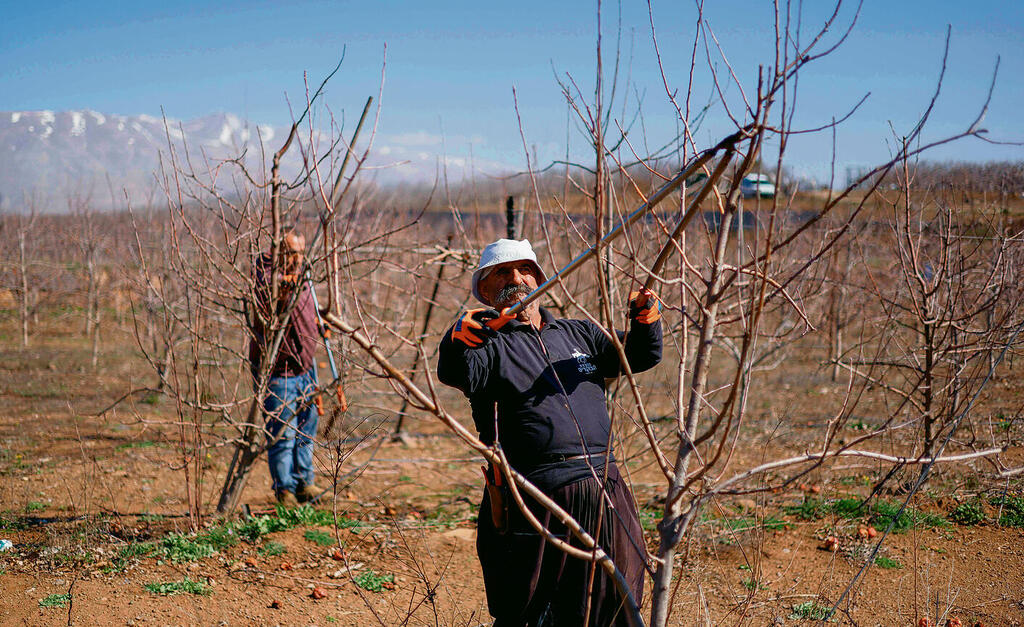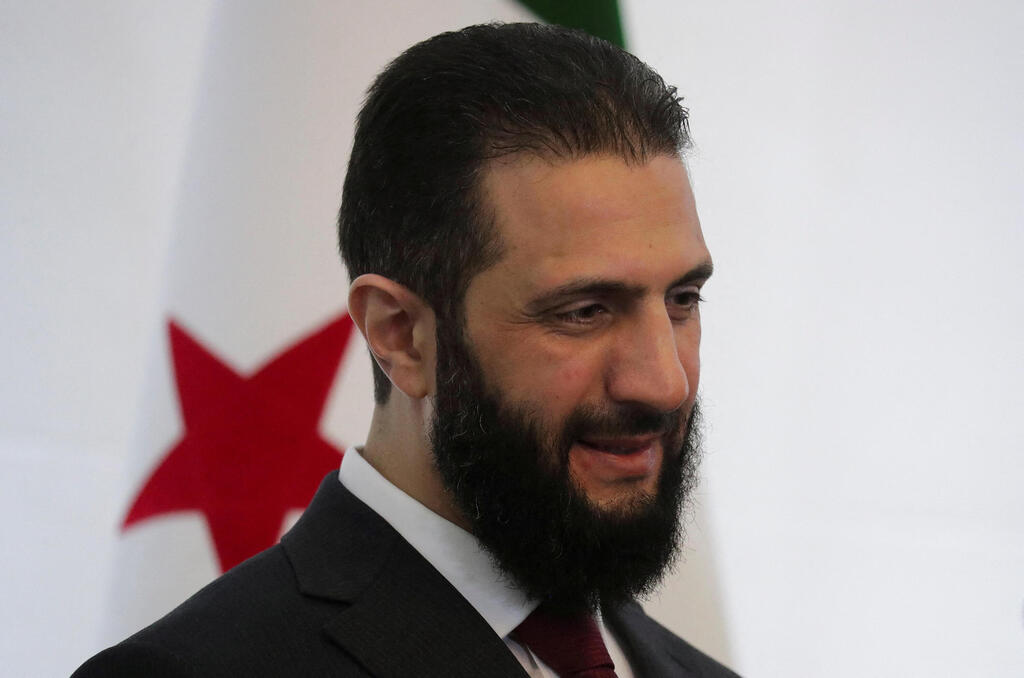Druze residents from Syria will begin working in the towns of the Golan Heights on Sunday, Defense Minister Israel Katz has announced. However, for now, arrival of the workers will be a one-time occurrence as part of a pilot project announced on Tuesday, which is yet to become permanent.
In the north, there are those who are skeptical about the plan’s success. “I don’t believe it will happen, maybe in three or four years,” estimated Alex Kudish, the orchard manager of Kibbutz Ein Zivan, adjacent to the Syrian border.
In recent weeks, under the instructions of Defense Minister Katz, the Coordinator of Government Activities in the Territories (COGAT), led by Major General Ghassan Alian, has been working on a framework to employ Druze workers from neighboring villages across the Syrian border. According to the plan, the framework will provide much-needed employment for the Druze across the border, while simultaneously addressing the severe shortage of labor in agriculture and construction in northern Israel.
However, Katz’s announcement does not yet signify a breakthrough for Golan farmers. For now, it is merely a pilot program of sorts, part of a working plan, under which approximately 40 Druze workers from Syria will arrive on the 16th of the month and work for one day in Majdal Shams. According to a joint investigation by Ynet and Yedioth Ahronoth, further planning and security measures are required before Syrian Druze workers can be permanently employed in Israel.
It remains unclear how many work permits will be granted or through which routes the workers will enter Israel. At the same time, reports from Syrian sources and publications in Arab media indicate that the new Syrian government has reached agreements with the Druze community in the As-Suwayda province, promising them integration into state institutions and security services. This development could complicate the situation.
According to IDF sources, the intention is to allow Syrian Druze residents, many of whom have relatives in Druze villages in Israel, to enter the country, similar to how Lebanese workers were once allowed to work in Israel before the withdrawal from southern Lebanon, or how work permits are granted to Jordanian residents employed in the Eilat and Dead Sea regions.
3 View gallery


Defense Minister Israel Katz visiting an IDF outpost near the northern border
(Photo: Defense Ministry)
Last weekend, Golan Regional Council head Uri Kalner met with Katz to discuss employing workers from Syria. “The army has been instructed to advance this with us, but it’s still a developing process,” Kalner said. “At peak season, up to 3,000 workers are needed for agriculture here, and there’s always a need for more hands. Syrian workers from neighboring areas could certainly help. Of course, we’ll ensure that security conditions allow it and that only Druze workers who ultimately accept Israel’s existence and support it will come here.”
Despite the potential economic and logistical benefits, skepticism remains among Golan farmers. “I don’t believe it will happen, maybe in three or four years,” said Alex Kudish, manager of the orchards at Kibbutz Ein Zivan, near the Syrian border. “I believe by then, the borders might even be open. But until then, we’re still in the middle of what feels like World War III in the Middle East, and everything here is constantly changing. Just yesterday, IDF struck several targets in Syria.”
Get the Ynetnews app on your smartphone: Google Play: https://bit.ly/4eJ37pE | Apple App Store: https://bit.ly/3ZL7iNv
Kudish has no doubt that the hardworking hands of Syrian neighbors across the border could significantly aid the Golan orchards. “Hopefully, it’ll happen, because it would also be more economical to employ workers from Syria. They wouldn’t demand the high wages we have to pay local or Thai workers here. We’re short on workers, and we can’t keep up with the wages demanded by local labor. Syria is no longer a threat to us, and if this contributes to good neighborly relations, even better.”
The head of the local council in Ein Kinya, Wael Mugrabi, voiced both support and caution regarding the plan. While praising the intention to bring Druze workers from Syria, he warned that such a move could endanger the Druze beyond the border.
“Unfortunately, we know how Israel is viewed in Syria and in the Arab world in general,” Mugrabi said. “It could be perceived as if they are traitors or collaborators with Israel.” Mugrabi suggested any initiative involving Syrian Druze should be handled discreetly to ensure their safety. “We know Druze have no interest in fighting Israel, and vice versa. I’m confident that if they come here, we’ll provide them with financial security, and on the other side, they’ll be strong and know how to protect themselves.”
In addition, for the first time since 1974, about 100 Druze religious leaders from Syria, living in villages along the Israeli-Syrian border, are expected to visit Israel. The purpose of the visit is religious, focusing on sites such as the tombs of Nabi Shu’ayb (Jethro) and other Druze saints. The unique visit is set to be finalized tomorrow at all levels, and if all goes well, the religious leaders will arrive by the weekend.
Prime Minister Benjamin Netanyahu and Defense Minister Israel Katz have repeatedly stated their commitment to ensuring the safety of Druze in southern Syria, amid brutal fighting led by Ahmad al-Sharaa against minorities in the country. Since al-Sharaa's rise to power in Syria, Druze communities in three regions of the country have expressed increasing concern over his intentions to establish an Islamist state that does not respect minorities or other religions.
Syria also remembers the “As-Suwayda attacks,” a series of suicide bombings and shootings carried out by terrorists from al-Sharaa’s organization during the Syrian civil war. The attacks occurred in 2018 in the city of As-Suwayda and its surroundings, killing 258 people, most of them Druze from the region, including 142 civilians, among them 38 women and children.
During his visit to IDF positions at the demilitarized zone on the peak of Mount Hermon on Tuesday, Defense Minister Israel Katz said, “Every morning, when al-Sharaa opens his eyes in his presidential palace in Damascus, he will see the IDF watching him from the heights of Mount Hermon and remember that we are here, in every security sector.”, has been working on a framework to employ Druze workers from neighboring villages across the Syrian border. According to the plan, the framework will provide much-needed employment for the Druze across the border, while simultaneously addressing the severe shortage of labor in agriculture and construction in northern Israel.




